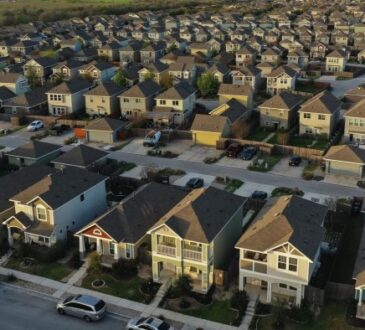
US home prices are expected to climb as the Federal Reserve begins cutting interest rates while the underlying economy is still firm, according to Goldman Sachs Research.
Our analysts increased their forecast for US home price appreciation to 4.5% this year and 4.4% in 2025, up from previous estimates of 4.2% and 3.2% respectively in April.
We spoke with Goldman Sachs Research analyst Vinay Viswanathan about the revised outlook and why homes might become more affordable even as prices continue to climb.
Your team recently upped its forecast for US home prices, noting that “bad news is likely good news” for home prices. What did you mean by that?
It’s a reflection of the fact that labor markets appear to be loosening, which gives the Fed more room to cut. Our economists now forecast the Fed will deliver three consecutive 25 basis point rate cuts at the remaining meetings this year.
Now, if we thought the ability of homebuyers to purchase houses would diminish because of a worsening economy, in which people lose jobs and income and are therefore unable to afford a mortgage, rising prices would be bad news.
But we’re not seeing higher permanent layoffs — at least not yet. The reason we think right now that bad news is good news is that rates are falling because of concerns around employment, and we don’t think those concerns will really affect the housing market without income loss. All you’re really seeing is that the cost of buying, of taking on a mortgage, is coming down. To that end, we’ve already seen substantial improvement in funding costs. Just to frame this, the peak in the cycle saw mortgage rates of about 7.8% in Oct. 2023. Mortgage rates have since fallen all the way back down below 6.5%. We believe we’re well past the peak in mortgage rates, and we think it’s going to be a slow but steady grind lower over the coming years.
How does your anticipated home price appreciation compare to recent history?
The growth in home prices has been really resilient. At the start of the pandemic, there was a lot of concern that home prices might actually decline, because of the loss of income. The opposite happened. There ended up being a massive surge in household formation, which created an organic need for housing. On top of that, it was also a time when there wasn’t a ton of supply, both in terms of existing inventory and new builds. Those factors in the supply and demand sides led to the strongest home price growth we’ve seen in the country’s history: around 20% on an annualized basis.
Over the last year, home prices have grown by about 5.5 %, which is a little above the historical trend of about 5%. Clearly, there’s still not enough supply. But it also goes back to the household formation story. Peak homeowner age is between 30 and 39, when people start having children. And we have a lot of people in America in that cohort who need housing just based on where they are in their lives.
But isn’t the unaffordability of housing impacting their buying decisions?
It’s true that, by almost any estimate, affordability is the worst right now than it’s been for as long as we have data on record — so since the early 1980s. A lot of folks were thinking we would have home price declines again because of this. We had maybe a couple of months of home price declines, but then very quickly they reversed back up.




